 W
WAfE-Turm was a 38-story, 116 m (381 ft) skyscraper in the Westend district of Frankfurt, Germany. The building was part of the Bockenheim campus of the Johann Wolfgang Goethe University and until 2013 housed the offices and seminar rooms of the departments of Social Sciences and Education. AfE is an acronym for Abteilung für Erziehungswissenschaft ; however, this department never moved in because it was closed before the construction of the tower was finished, which happened in 1972. The tower was demolished on February 2, 2014.
 W
WThe Bauakademie in Berlin, Germany, was a higher education school for the art of building to train master builders. It originated from the construction department of the Academy of Fine Arts and Mechanical Sciences, which emphasized the aesthetic elements of art of building while ignoring the technical. Thus, the governmental Upper Building Department ("UBD") decided to establish an entirely new building educational institution named "Bauakademie". It was founded on 18 March 1799 by King Frederick William III and, in 1801, incorporated into the UBD, as its section.
 W
WThe Anhalter Bahnhof is a former railway terminus in Berlin, Germany, approximately 600 m (2,000 ft) southeast of Potsdamer Platz. Once one of Berlin's most important railway stations, it was severely damaged in World War II, and finally closed for traffic in 1952, when the GDR-owned Deutsche Reichsbahn rerouted all railway traffic between Berlin and places in the GDR avoiding the West Berlin area. The station's name lives on in the Berlin S-Bahn station of the same name, opened in October 1939 as part of the North-South S-Bahn link.
 W
WThe Berlin Palace, formally the Royal Palace, on the Museum Island in Berlin was the main residence of the House of Hohenzollern from 1443 to 1918. Expanded by order of King Frederick I of Prussia according to plans by Andreas Schlüter from 1689 to 1713, it was thereafter considered a major work of Prussian Baroque architecture. The former royal palace was one of Berlin’s largest buildings and shaped the cityscape with its 60-meter (200 ft)-high dome. Damaged during the Allied bombing in World War II, it was demolished by the East German authorities in 1950, and later became the location of the modernist East German Palace of the Republic. After German reunification and several decades of debate and discussion, the Palace of the Republic was itself demolished and the Berlin Palace is being reconstructed to house the Humboldt Forum museum. As of 2020, the reconstruction process appears to be nearing completion and is estimated to achieve completion with a few years.
 W
WThe Berlin Customs Wall was a ring wall around the historic city of Berlin, between 1737 and 1860; the wall itself had no defence function but was used to facilitate the levying of taxes on the import and export of goods (tariffs) which was the primary income of many cities at the time.
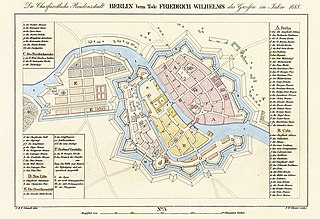 W
WThe Berlin Fortress was the fortification of the historic city of Berlin. Construction started in 1650. The demolition of its ramparts began in 1740.
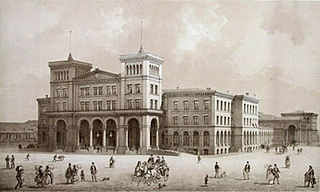 W
WGörlitzer Bahnhof was the name of the Berlin railway terminus for the mainline link between the capital, Cottbus in Brandenburg and Görlitz in Lower Silesia. It stood overlooking Spreewaldplatz in the Outer Luisenstadt, the eastern part of Kreuzberg but wartime bombing and Cold War tensions led to its closure and eventual demolition.
 W
WHotel Bristol was a hotel on Unter den Linden in Berlin, Germany. It was designed by architect Gustav Georg Carl Gause and opened in 1891.
 W
WHotel Esplanade once stood on Berlin's busy transport and nightlife hub Potsdamer Platz. During its colourful and turbulent history it went from being one of the German capital's most luxurious and celebrated hotels to a bombed-out ruin lost in the wastelands alongside the Berlin Wall. A section of it still survives today, albeit as a fragment incorporated into the soaring modern complex of the Sony Center.
 W
WHotel Excelsior occupied number 112/113, Königgrätzer Straße on Askanischer Platz in the Berlin district of Kreuzberg. It was once one of the largest and most luxurious hotels in Europe but its destruction during World War II resigned it to the German capital's list of lost historical landmarks.
 W
WHotel Kaiserhof was a luxury hotel in Wilhelmplatz, Berlin, Germany. It opened in October 1875. It was located next to the Reich Chancellery in what was at the time the city's "government quarter".
 W
WMonbijou Palace was a Rococo palace in central Berlin located in the present-day Monbijou Park on the north bank of the Spree river across from today's Bode Museum and within sight of the Hohenzollern city palace. Heavily damaged in World War II, the ruins were finally razed by the communist authorities of East Berlin in 1959. The palace has not been rebuilt.
 W
WBerlin Sportpalast was a multi-purpose indoor arena located in the Schöneberg section of Berlin, Germany. Depending on the type of event and seating configuration, the Sportpalast could hold up to 14,000 people and was for a time the biggest meeting hall in Berlin. The Sportpalast is most known for speeches and rallies that took place during the Third Reich, particularly Nazi Propaganda Minister Joseph Goebbels's 1943 "Total War" speech.
 W
WTrinity Church (Dreifaltigkeitskirche) was a Baroque Protestant church in Berlin, eastern Germany, dedicated to the Holy Trinity. It was opened in August 1739 and destroyed in November 1943, with its rubble removed in 1947.
 W
WThe Berlin Wall was a guarded concrete barrier that physically and ideologically divided Berlin from 1961 to 1989. Construction of the wall was commenced by the German Democratic Republic on 13 August 1961. The Wall cut off West Berlin from surrounding East Germany, including East Berlin. The barrier included guard towers placed along large concrete walls, accompanied by a wide area that contained anti-vehicle trenches, beds of nails, and other defenses. The Eastern Bloc portrayed the Wall as protecting its population from fascist elements conspiring to prevent the "will of the people" from building a socialist state in East Germany.
 W
WSt Catherine's Monastery in Bremen, Germany, was founded in 1253 by the Dominicans. Today traces of its existence remain in the area of the Katharinenstraße and Katharinenklosterhof in the old town.
 W
WCarinhall was the country residence of Hermann Göring. It was built on a large hunting estate northeast of Berlin in Schorfheide forest, between the lakes Großdöllner See and Wuckersee in the north of Brandenburg.
 W
WThe Potsdam City Palace is a building in Potsdam, Germany, located on the Old Market Square, next to the St. Nicholas' Church (Nikolaikirche). It was the second official residence of the margraves and electors of Brandenburg, later kings in Prussia, kings of Prussia and German emperors.
 W
WDargun Palace, previously Dargun Abbey was a Cistercian monastery in Dargun, Mecklenburgische Seenplatte, in Mecklenburg-Vorpommern, Germany, in the former Grand Duchy of Mecklenburg-Schwerin, converted after its dissolution into a palace.
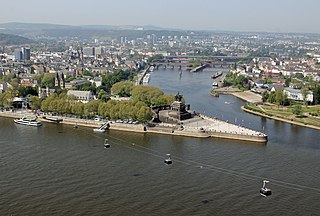 W
WDeutsches Eck is the name of a headland in Koblenz, Germany, where the Mosel river joins the Rhine. Named after a local commandry of the Teutonic Order, it became known for a monumental equestrian statue of William I, first German Emperor, erected in 1897 in appreciation for his role in the unification of Germany. One of many Emperor William monuments raised in the Prussian Rhine Province, it was destroyed in World War II and only the plinth was preserved as a memorial. Following German reunification, a replica of the statue was erected on the pedestal after controversial discussions in 1993. It is today a Koblenz landmark and a popular tourist destination.
 W
WDeutschlandhalle was an arena located in the Westend neighbourhood of Berlin, Germany. It was inaugurated on 29 November 1935 by Adolf Hitler. The building was granted landmark status in 1995, but on 3 December 2011 the building was demolished.
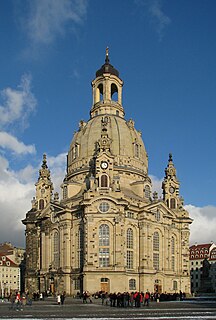 W
WThe Dresden Frauenkirche is a Lutheran church in Dresden, the capital of the German state of Saxony. An earlier church building was Catholic until it became Protestant during the Reformation.
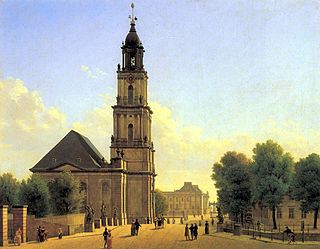 W
WThe Garrison Church was a Protestant church in the historic centre of Potsdam. Built by order of King Frederick William I of Prussia according to plans by Philipp Gerlach from 1730 to 1735, it was considered as a major work of Prussian Baroque architecture. With a height of almost 90 metres, it was Potsdam's tallest building and shaped its cityscape. In addition, the Garrison Church was part of the city's famous "Three Churches View" together with St. Nicholas Church and Holy Spirit Church. Damaged during the British bombing in World War II, the East German authorities demolished church in 1968. After the German reunification the Garrison Church is currently being rebuilt as a centre for remembrance and reconciliation.
 W
WThe Glaspalast was a glass and iron exhibition building located in the Old botanical garden - Munich in Munich modeled after The Crystal Palace in London. The Glaspalast opened for the Erste Allgemeine Deutsche Industrieausstellung on July 15, 1854.
 W
WThe Großgaststätte Ahornblatt was a building located in the Mitte district of Berlin. Built between 1971 and 1973 as part of the new Fischerinsel residential condominium project, it accommodated a self service restaurant with 880 seats and a shopping arcade for the employees of the East German Ministry of Construction and for the workers of other nearby offices. Despite protests, the building was demolished in 2000.
 W
WSaint Mary's Cathedral in Hamburg was the cathedral of the ancient Roman Catholic Archdiocese of Hamburg, which was merged in personal union with the Diocese of Bremen in 847, and later in real union to form the Archdiocese of Hamburg-Bremen, as of 1027.
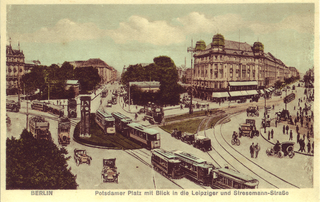 W
WHotel Fürstenhof was a hotel facing both Leipziger Platz and Potsdamer Platz in Berlin, Germany. It was designed by architects Richard Bielenberg and Josef Moser and opened in 1907. On 22 November 1943 the hotel was destroyed during a raid on Berlin; the ruins were completely demolished in the 1950s.
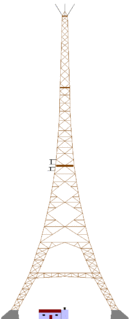 W
WThe Transmitter Ismaning was a large radio transmitting station near Ismaning, Bavaria, Germany. It was inaugurated in 1932. From 1932 to 1934 this transmitter used a T-antenna as transmitting antenna, which was spun between two 115-metre-high free-standing wooden lattice towers, which were 240 metres apart. As this antenna had an unfavourable vertical radiation pattern, which produced much skywave resulting in a too small fading-free reception area at night, in 1934 a new antenna was installed. Therefore, one of the towers was dismantled and rebuilt on a 39-metre-high (128 ft) wooden lattice base. While this work took place, an L-Antenna was used, which was spun between the other tower and a small auxiliary wooden tower. It became defunct in 1977 and was destroyed in 1983.
 W
WThe Königsberg Castle was a castle in Königsberg, Germany, and was one of the landmarks of the East Prussian capital Königsberg.
 W
WThe Mühlacker Broadcasting Transmission Facility is a radio transmission facility near Mühlacker, Germany, first put into service on November 21, 1930. It uses two guyed steel tube masts as aerials and one guyed steel framework mast, which are insulated against ground. It has two transmission aerials for shortwave and one free standing steel framework tower for directional radio services. The shortwave transmitter was shut off on October 19, 2004. The medium wave transmitter was switched off in January 2012.
 W
WMy God, Help Me to Survive This Fatal Attraction, sometimes referred to as the Fraternal Kiss, is a graffiti painting by Dmitri Vrubel on the eastern side Berlin wall. Painted in 1990, it has become one of the best known pieces of Berlin wall graffiti art. The painting depicts Leonid Brezhnev and Erich Honecker in a socialist fraternal kiss, reproducing a photograph taken in 1979 during the 30th anniversary celebration of the foundation of the German Democratic Republic.
 W
WThe National Kaiser Wilhelm Monument (Kaiser-Wilhelm-Nationaldenkmal) was a memorial structure in Berlin dedicated to Wilhelm I, first Emperor of a unified Germany. It stood in front of the Stadtschloss from 1897 through 1950, when both structures were demolished by the GDR government.
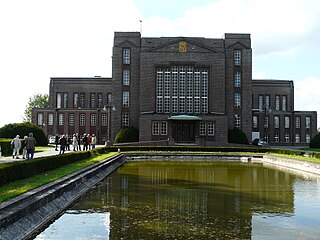 W
WNauen Transmitter Station in Nauen, Havelland district, Brandenburg, Germany, is the oldest continuously operating radio transmitting installation in the world. Germany's first high power radio transmitter, it was founded on 1 April 1906 by Telefunken corporation and operated as a longwave radiotelegraphy station through World War II, and during World War I became Germany's main link with the outside world when its submarine communications cables were cut. Upgraded with shortwave transmitters in the 1920s it was Germany's most advanced long range radio station, continually upgraded with the latest equipment and serving as an experimental station for Telefunken to test new technology. At the end of World War II, invading Russian troops dismantled and removed the transmitting equipment. During the Cold War it served as the GDR's international shortwave station Radio Berlin International (RBI), and was the East Bloc's second most powerful radio station, disseminating Communist propaganda to other countries. Since German Reunification in 1991 it has been operated by Deutsche Telekom, Germany's state telecommunication service. The original 1920 transmitter building designed by architect Herman Muthesius is still used; it is the only remaining building designed by that architect.
 W
WThe Neustrelitz Palace in Neustrelitz in Mecklenburg-Vorpommern, Germany was a princely palace, which mostly served as the main residence of the Grand Dukes of Mecklenburg-Strelitz. The palace was destroyed during World War II and was not constructed, although possible. Only the park remains today.
 W
WThe Old Market Square is a centrally located square in downtown Potsdam which forms the historical centre of the city. The square consists of the area around St. Nicholas' Church. Today the term refers in particular to the area directly in front of the church. It is bordered by several prestigious historical buildings. The square has been the site of much architectural reconstruction work in recent years which has restored much historic building fabric that was lost in World War Two.
 W
WThe Ordenspalais was a building on the northern corner of Wilhelmplatz with Wilhelmstraße in Berlin.
 W
WThe Reich President's Palace was from 1919 to 1934 an official residence of the President of the Reich and the official seat of the German head of state.
 W
WThe Palace of the Republic was a building in Berlin that hosted the Volkskammer, the parliament of the German Democratic Republic, from 1976 to 1990.
 W
WThe Reich Chancellery was the traditional name of the office of the Chancellor of Germany in the period of the German Reich from 1878 to 1945. The Chancellery's seat, selected and prepared since 1875, was the former city palace of Prince Antoni Radziwiłł (1775–1833) on Wilhelmstraße in Berlin. Both the palace and a new Reich Chancellery building were seriously damaged during World War II and subsequently demolished.
 W
WRemplin Palace is located in the village of Remplin, part of the municipality of Malchin in Mecklenburg-Vorpommern, Germany. The palace was one of the residences of the Grand Ducal family of Mecklenburg-Strelitz until it was destroyed by fire in 1940. Only the northern wing of the complex is remaining.
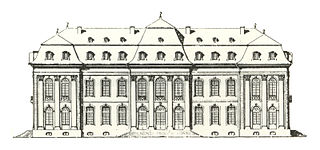 W
WSchloss Philippsfreude was a rococo Schloss in Wittlich in Rhineland-Palatinate, Germany. It served as a hunting lodge and summer palace for the Prince-Electors of Trier. It was destroyed by French revolutionary troops in 1797. Today, nothing is left anymore.
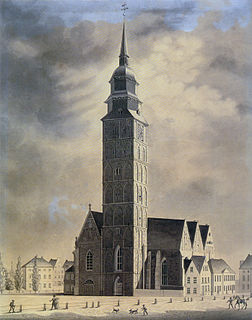 W
WSt. Ansgarii Church was a medieval Brick Gothic church in Bremen. The 97-meter-high tower was the tallest landmark of the city for centuries. The church was the starting point of the Reformation in Bremen. The building was severely damaged during World War II and the ruin was demolished in the 1950s. A new church building under the same name was constructed outside of the old city.
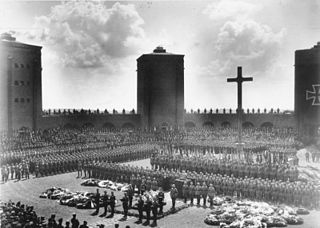 W
WThe Tannenberg Memorial was a monument to the German soldiers of the Battle of Tannenberg (1914), the First Battle of the Masurian Lakes and the medieval Battle of Tannenberg (1410). The victorious German commander, Generalfeldmarschall Paul von Hindenburg, became a national hero and was later interred at the site.
 W
WThe teahouse on the Mooslahnerkopf hill was the favourite destination of Adolf Hitler when he was at his Berghof at Obersalzberg.